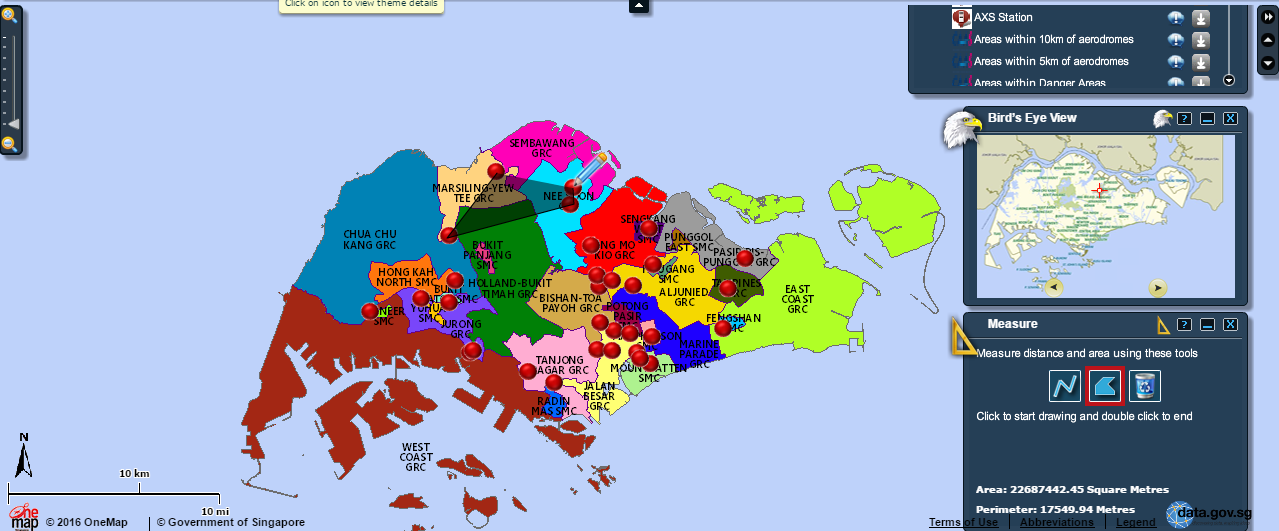Qui Vivra Verra - Geospatial Dashboard
Interactive Visualization of Geospatial Data
Building a dashboard for interactive visualization of geospatial data is not a novel idea, and has been used by many organizations around the world, including the Singapore Government. OneMap.sg is the Singapore government’s attempt to provide a service to visualize the geospatial information provided by the various government agencies, and has a variety of useful functions to aid users in visualizing data, which we will look at.
Firstly, OneMap.sg provides a large choice of base layers and data layers, allowing users to visualize geospatial data about a large variety of subjects. Users are also able to upload their own datasets onto to visualization service. The ability for users to upload additional data for visualization could be applied to the project, in which we will prepare various data layers that are most likely to have an impact on library patronage.
Next, OneMap.sg allows users to filter out unwanted data through a myriad of query functions like landQuery, SchoolQuery and BizQuery, allowing users to only see the data they want. This is another useful function that has relevant applications for the project, as it avoids cluttering the map. This will be implemented as selectable layers in the dashboard, allowing users to choose the layers they wish to visualize.
In addition to the large amount of data available for visualization on OneMap.sg and the utility functions, the dashboard also provides some basic analysis functions, like allowing users to measure distances and areas on the map.
While OneMap.Sg is useful for an introductory exploration into geospatial data, its lack of advanced analysis functions unfortunately limits the amount of insights that can be drawn from the data provided. However, it is sufficient for serving as a basic design for the project.
